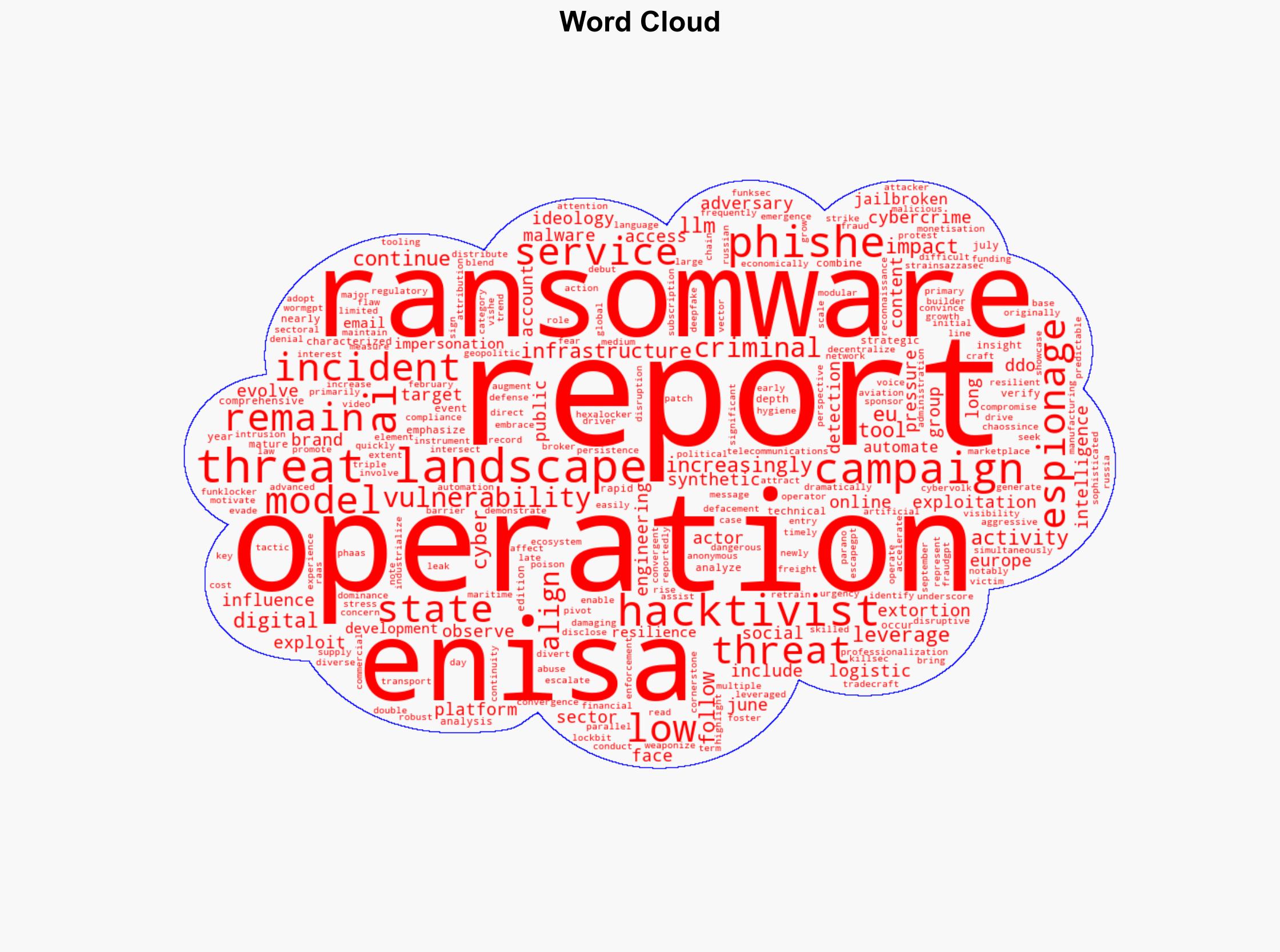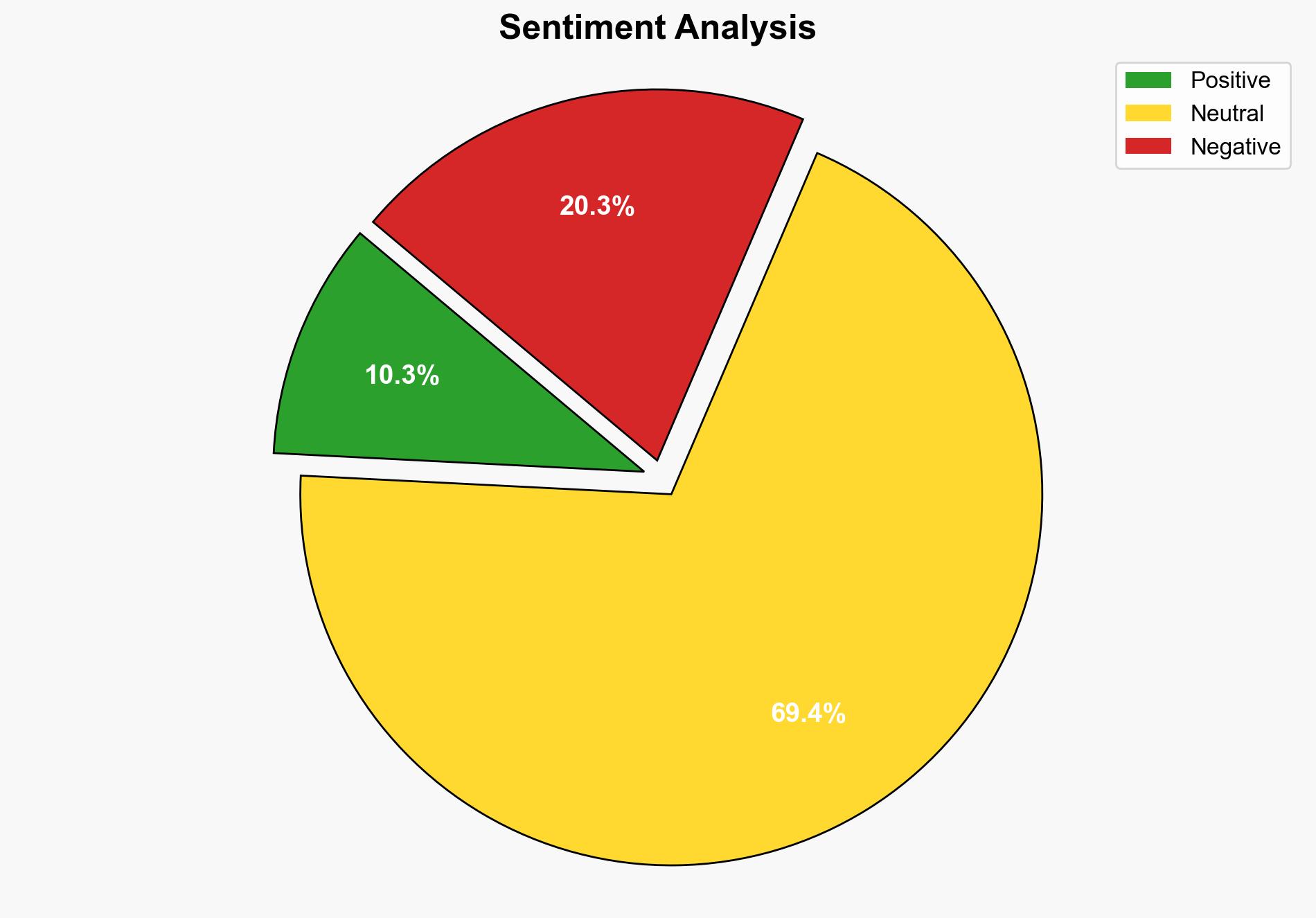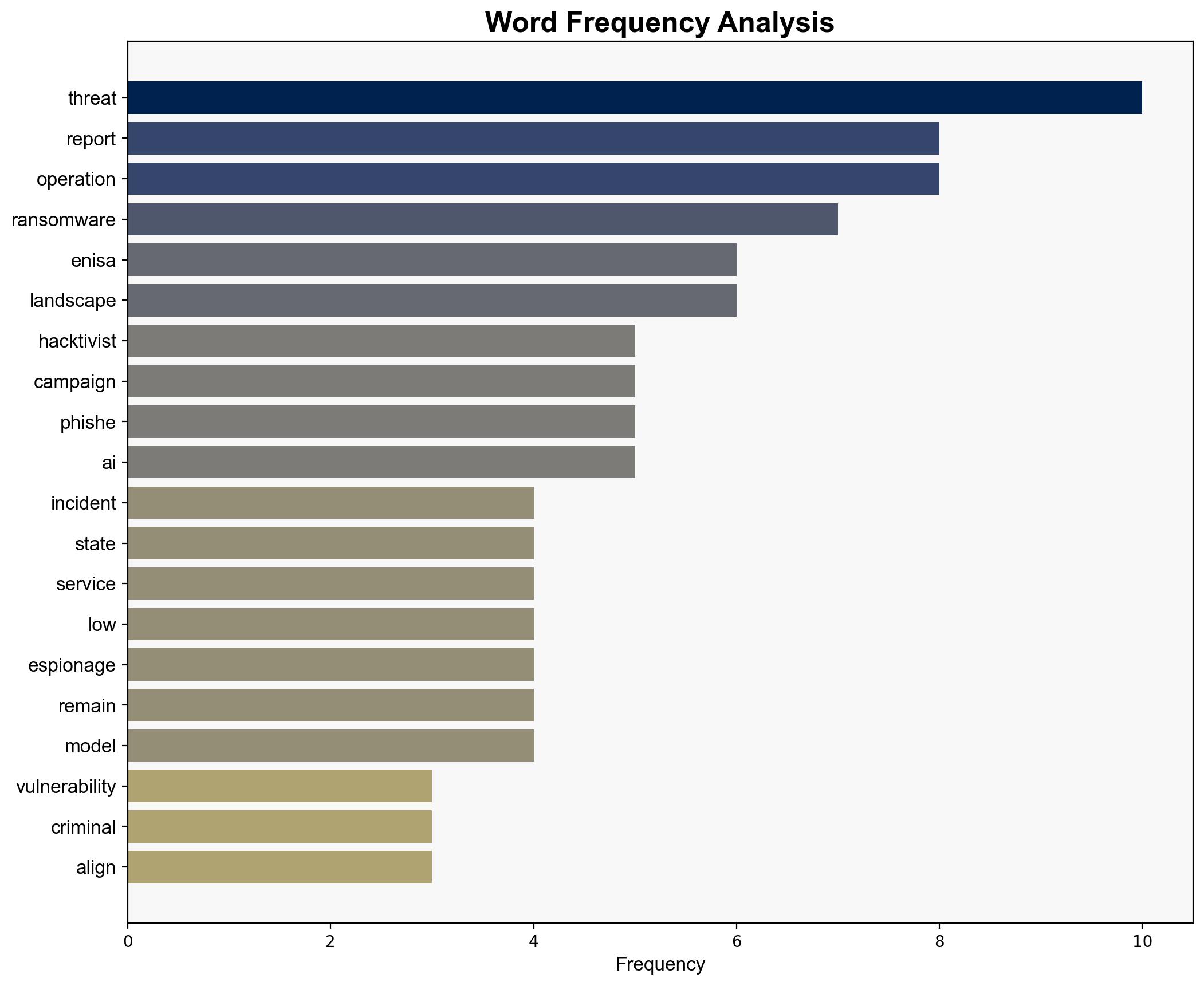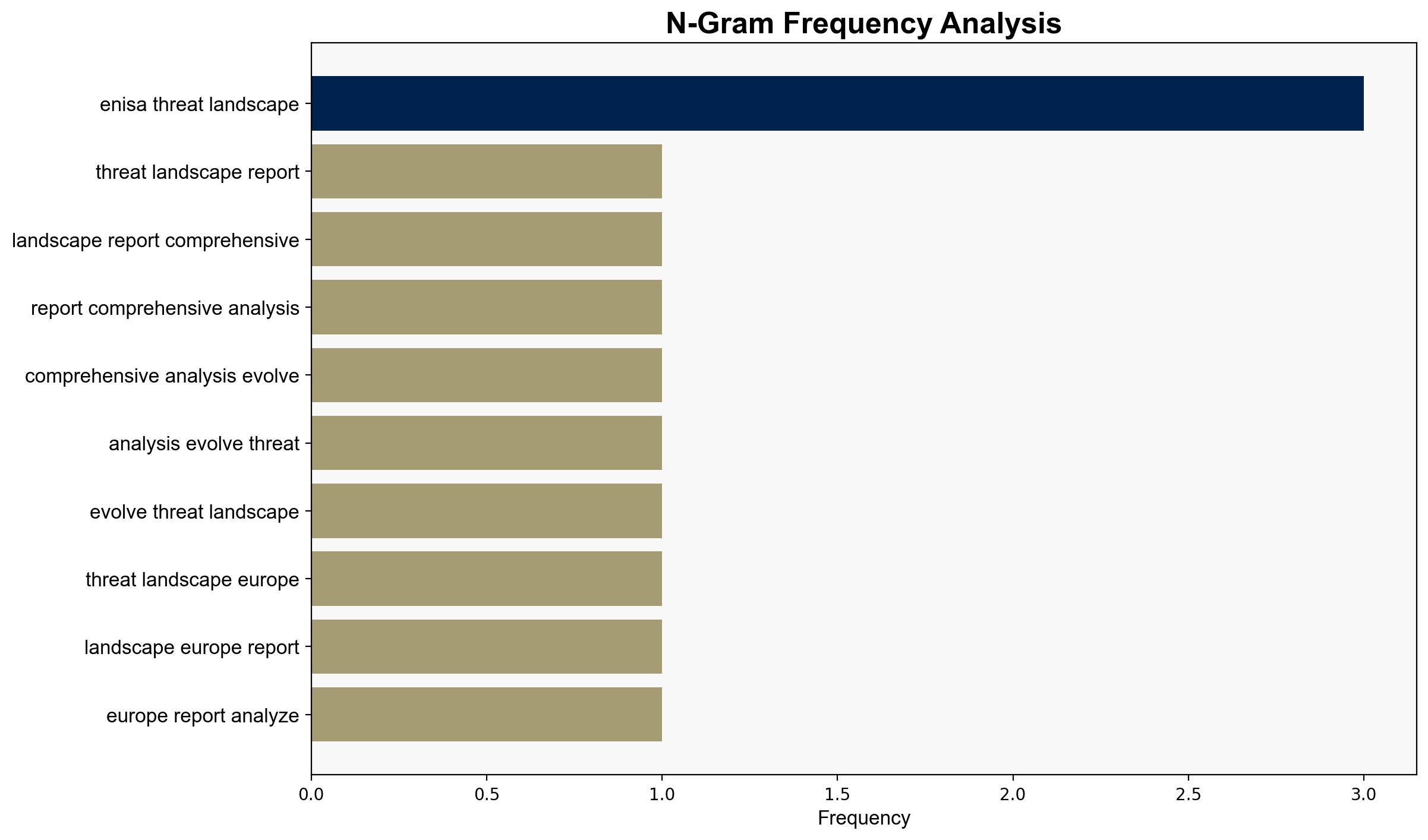Reading the ENISA Threat Landscape 2025 report – Securityaffairs.com
Published on: 2025-10-06
Intelligence Report: Reading the ENISA Threat Landscape 2025 report – Securityaffairs.com
1. BLUF (Bottom Line Up Front)
The ENISA Threat Landscape 2025 report highlights an increasingly complex and professionalized cyber threat environment in Europe, with a notable convergence of criminal and state-aligned activities. The most supported hypothesis suggests that ransomware and state-sponsored cyber espionage will continue to dominate, driven by technological advancements and geopolitical tensions. Confidence level: High. Recommended action: Enhance collaborative cybersecurity frameworks across EU states to address both criminal and state-sponsored threats.
2. Competing Hypotheses
Hypothesis 1: The primary threat to European cybersecurity in 2025 will be ransomware attacks, driven by the professionalization of cybercrime and the rise of Ransomware-as-a-Service (RaaS) platforms.
Hypothesis 2: State-sponsored cyber espionage will be the dominant threat, as geopolitical tensions escalate and state-aligned actors increase their focus on critical infrastructure and strategic sectors.
Using Bayesian Scenario Modeling, Hypothesis 1 is supported by the observed rise in ransomware incidents and the decentralization of operations, while Hypothesis 2 is supported by the sophistication and persistence of state-aligned campaigns targeting critical sectors.
3. Key Assumptions and Red Flags
Assumptions:
– Ransomware groups will continue to innovate and evade law enforcement.
– State-sponsored actors will maintain or increase their focus on critical infrastructure.
Red Flags:
– Potential underestimation of emerging threats such as AI-driven attacks.
– Lack of comprehensive data on the intersection of hacktivist and criminal activities.
4. Implications and Strategic Risks
The convergence of criminal and state-aligned cyber activities poses a significant risk to European economic stability and national security. The increasing sophistication of attacks, particularly those leveraging AI, could lead to more frequent and severe disruptions. Geopolitical tensions may exacerbate these threats, with potential for escalation into broader conflicts.
5. Recommendations and Outlook
- Strengthen EU-wide cybersecurity collaboration and information sharing to address cross-border threats.
- Invest in AI-driven threat detection and response capabilities to counter emerging attack vectors.
- Scenario Projections:
- Best Case: Enhanced cooperation leads to significant disruption of major cybercrime networks.
- Worst Case: A major cyberattack on critical infrastructure results in widespread economic and social disruption.
- Most Likely: Continued rise in ransomware and espionage activities, with periodic disruptions.
6. Key Individuals and Entities
– FunkSec, KillSec, Azzasec, Hexalocker, Parano, LockBit, Chaos
7. Thematic Tags
national security threats, cybersecurity, counter-terrorism, regional focus





